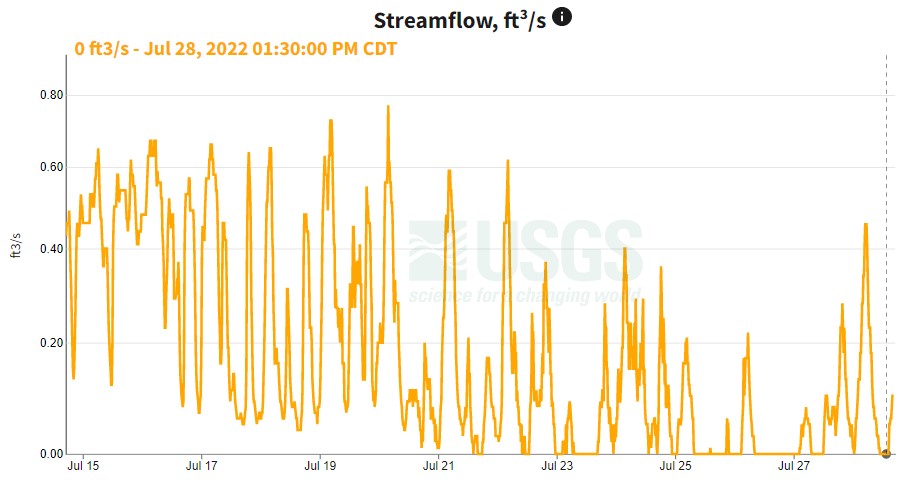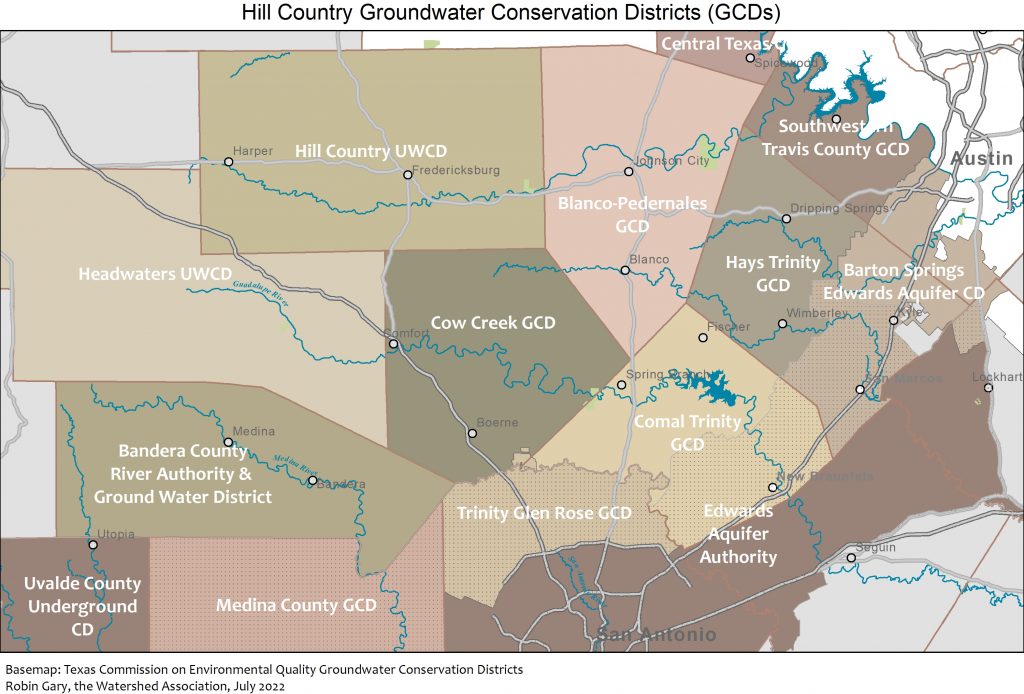July 2022 Hydro Report
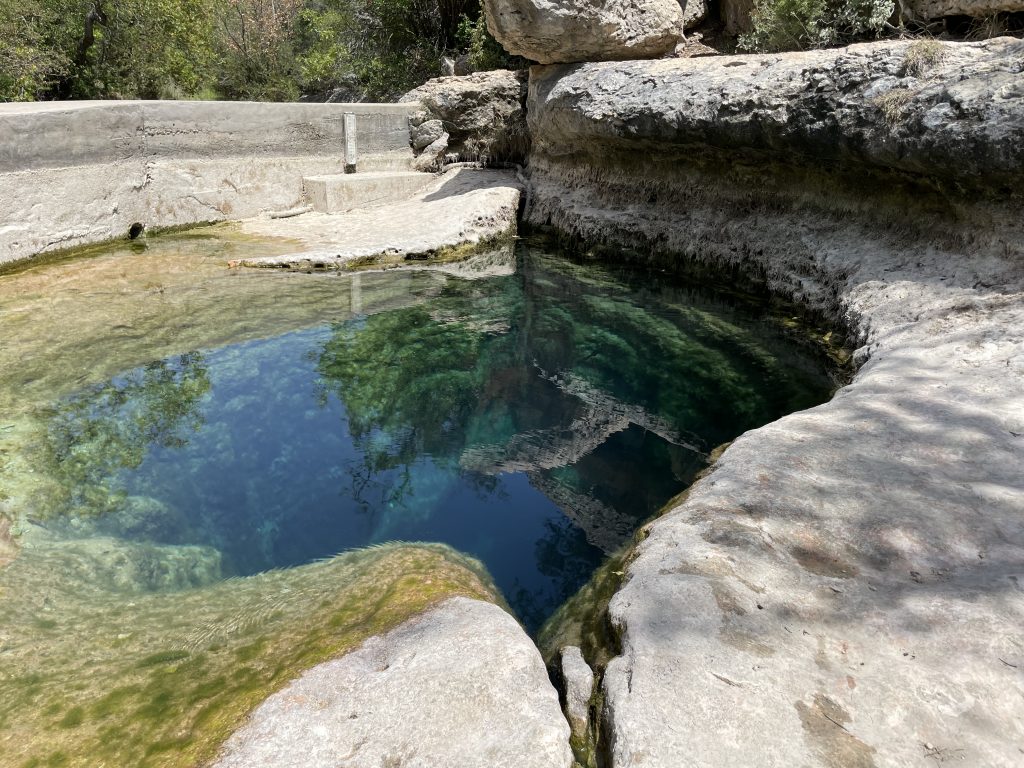
Springs and monitor wells in both the Trinity and Edwards Aquifers show significant drought impacts. Jacob’s Well spring flow is fluctuating between 0.6 and 0.09 cfs. Nearby pumping from water supply wells supplying Woodcreek are known to directly affect spring flow when the pumps are running. The County suspended swimming at Jacob’s Well on June 29, 2022 due to high bacteria counts brought about by heavy recreational use and low flow. A downstream dam usually causes water to pool around the Well creating better swimming conditions. Currently, the downstream dam gate has been removed to allow close monitoring of true spring flow from the Well itself.
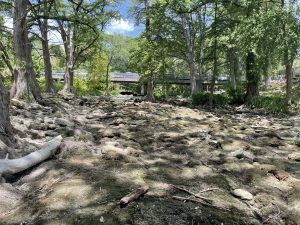
With such low flows, parts of Cypress Creek have gone dry and the deeper pools are being sustained by small local springs.
The upper section of the Blanco River has gone dry at several locations and is showing record lows at others. The LCRA station on the Blanco River at Blanco is showing daily averages of 0 cfs. No water is making it over the spillway near the 165 bridge. Baseflow for the section of the Blanco near Wimberley is provided by Pleasant Valley Springs and Park Springs and is measured at the USGS monitoring station on the Blanco at Fischer Store Rd. Baseflow continues to decline and is at the lowest recorded flow since the USGS monitoring site was established in 2016. Low spring flow translates to low flow in area creeks and rivers.
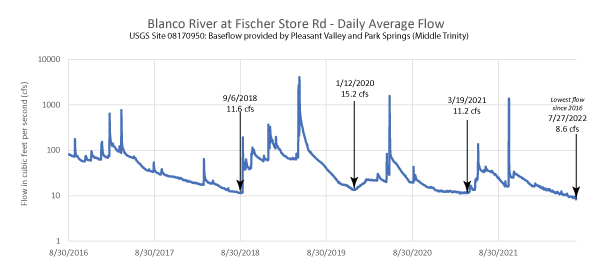
Groundwater levels are similarly affected by serious rainfall deficits (between 8-10 inches behind average year to date totals). In fact, water levels in the Middle Trinity aquifer did not fully recover even in 2021. Drought and heavy water use continue to cause water level declines. Edwards Aquifer water levels are also exceptionally low. The Edwards Aquifer Authority J-17 drought index well is only 4 feet away from the threshold for a Stage 4 drought declaration. The Barton Springs Edwards Aquifer Conservation District Lovelady monitor well shows similar declines and is approximately 8 feet away from the next drought stage.
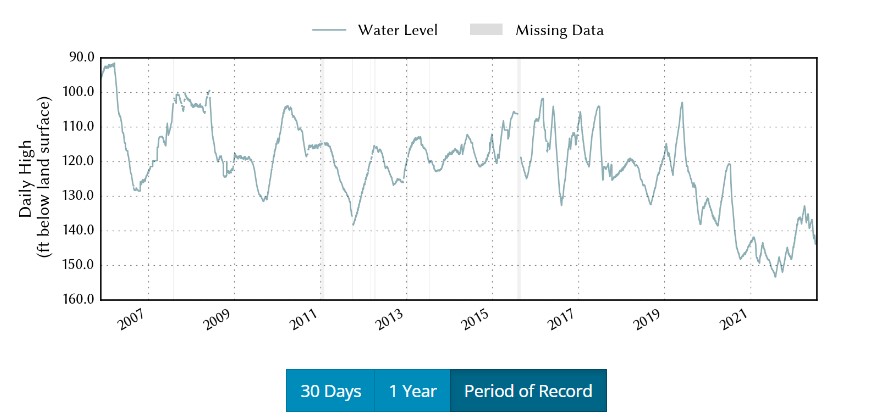
All of the Hill Country is experiencing rainfall deficits which leading to pronounced drought conditions in our area.
May through September is considered the high-water-use season. For many homes, outdoor irrigation increases substantially. Most communities in the Hill Country are groundwater-dependent, so drought conditions are particularly troublesome for water supplies, recreation-based tourism, and springs and rivers. Please follow groundwater district drought restrictions and local water provider drought water use guidance. Limit outdoor irrigation and conserve water indoors. Identify and fix leaks. Conserve water to prolong water supplies until rainfall can replenish our aquifers. While we can’t control the weather, we can conserve water and look for innovative ways to use alternate supplies (like site-harvested supplies—rainwater and AC condensate) to lessen impacts of pumping. While each aquifer behaves differently, all groundwater is limited and deserves to be used wisely. For more information on native landscapes, rainwater harvesting, leak identification tips and more, visit the Home Owner Resource page.
No matter what area agencies call their drought declaration, coordinated water conservation is important to preserve groundwater availability, spring flow, and water supplies.
| Agency | Drought Stage | Date Declared | Details |
| Barton Springs Edwards Aquifer CD | Stage II Alarm Drought (minimum of 20% Reduction) | June 2022 | Press Release, 6/9/2022 |
| Blanco Pedernales GCD | Stage 2 – 20% Reduction in pumping | June 2022 | Press Release, June 2022 |
| Comal Trinity GCD | |||
| Cow Creek GCD | Stage 3 – 30% Reduction in pumpage | June 2022 | Public Notice, 6/14/2022 |
| Hays Trinity GCD | 30% Curtailment for Jacob’s Well GMZ, 30% for remainder of the District | July 2022 | Board Order, 7/7/22 |
| Edwards Aquifer Authority | San Antonio Pool is in Stage 3 – 35% Reduction | June 2022 | Press Release, 6/13/22 |
[Updated 7/18/2022]
